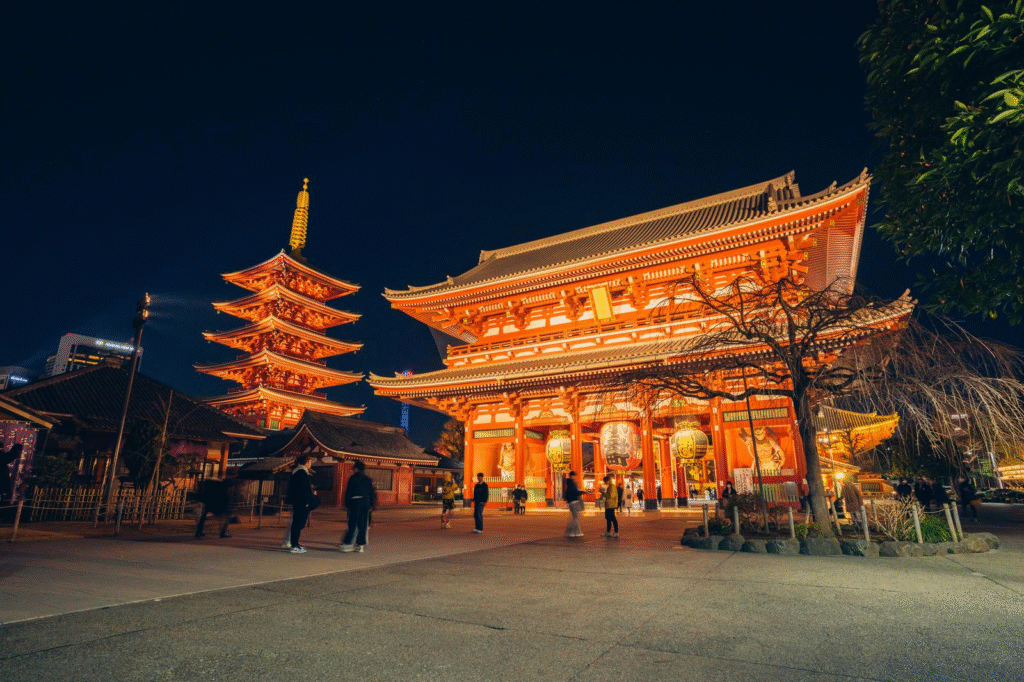If you’re planning your first trip to Japan, you might already know that Japanese people deeply value respect, harmony, and good manners.
But what does that actually mean for everyday situations?
When should you bow? Should you shake hands? Is it okay to talk on the train?
As a local Japanese living near Mt. Fuji, I’ve seen many visitors feel unsure about these cultural details — and I know how stressful that can feel.
In this guide, I’ll walk you through the essential etiquette tips every respectful traveler should know.
Not just the “do’s and don’ts,” but the cultural reasons behind them — so you can explore Japan with confidence and care.
Quick Navigation
Introduction
Etiquette plays a huge role in Japanese society.
It’s not just about rules — it’s about showing respect, maintaining harmony, and understanding your place within a group.
From the way you greet someone to how you behave on public transportation, even the smallest actions can leave a big impression.
Many Japanese customs may not be obvious at first — and that’s totally okay.
As a traveler, you’re not expected to be perfect. But being aware of local manners shows a lot of respect, and it helps you avoid awkward moments too.
In this guide, we’ll go beyond the basics and explore the why behind common etiquette in Japan — so you don’t just follow the rules, you actually understand them.
Let’s make your journey smoother, more respectful, and more connected — one bow and one “itadakimasu” at a time.
If this is your first time visiting Japan, I also recommend reading my 【10 Essential Japan Travel Tips for First-Time Visitors.】
It covers helpful basics that will make your trip much smoother.
Greeting the Right Way
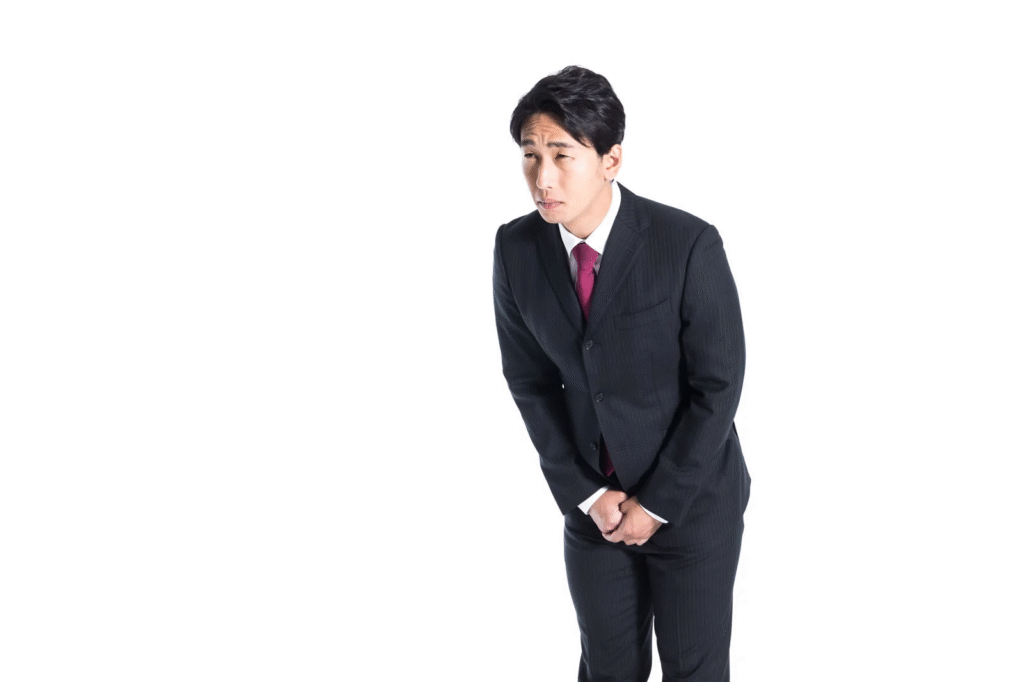
Bowing (Ojigi) — When and How to Bow
In Japan, bowing (called ojigi in Japanese) is the most common way to greet people and show respect.
It’s used not only for greetings but also to express thanks, apologies, and even to ask for a favor.
There are different types of bows depending on the situation:
- Eshaku (15 degrees): Casual bow for a quick greeting (like nodding hello).
- Keirei (30 degrees): Polite bow for formal situations (business, meeting someone important).
- Saikeirei (45 degrees): Deep bow for showing great respect or serious apology.
If you’re not sure how deep to bow, a small nod with eye contact and a smile is always appreciated — especially as a visitor.
Handshakes? Smiles? What’s Expected?
Unlike many Western countries, handshakes are not very common in Japan — especially between Japanese people.
In casual situations, a handshake might happen if the other person offers it first, but usually, a small bow and a smile are enough.
Don’t worry too much about being perfect.
A warm smile and a simple bow already show that you’re making an effort to respect the culture — and that effort means a lot.
Saying “Konnichiwa” (hello) or “Hajimemashite” (nice to meet you) with a small bow works great!
Shoes Off, Please — Understanding Indoor Customs

How to handle slippers and toilet slippers
In many Japanese homes, traditional inns (ryokan), and even some restaurants or temples, you’ll be asked to take off your shoes before entering.
Instead, slippers are often provided for indoor use.
Here’s how it works:
- 🚪 Take off your shoes at the entrance and neatly place them with the toes facing the door.
- 🥿 Put on the provided slippers before stepping into the house or indoor space.
- 🚻 Switch to toilet slippers when entering the bathroom (if provided).
These are separate from the regular indoor slippers.
👉 Important:
Don’t forget to switch back to your regular slippers after using the bathroom!
Wearing toilet slippers into the living area is considered very bad manners — but don’t worry, Japanese people understand if visitors make this mistake. A smile and a quick apology (“Gomen nasai”) is enough.
If you’re not sure what to do, just look around and follow what others are doing.
When in doubt, it’s always okay to ask politely.
Where to remove your shoes (homes, ryokan, temples, restaurants)
In Japan, removing your shoes before entering certain spaces is a common and important custom.
Here are the typical places where you should take off your shoes:
- 🏠 Private homes: Always remove your shoes at the entrance (genkan).
- 🏯 Traditional inns (ryokan): Remove shoes at the entrance or before entering tatami rooms.
- 🍣 Some restaurants: Especially at places with tatami seating (you may be given slippers for walking around).
- 🛕 Temples and shrines: Some temple halls require shoes off (check for signs).
Look for a raised floor at the entrance — that’s usually the signal to take off your shoes.
The meaning behind this tradition
The Japanese custom of removing shoes comes from the cultural idea of keeping the inside space pure, clean, and separate from the outside world.
In the past, homes had soft flooring like tatami mats, which could easily be damaged or dirtied by shoes.
But it’s not just about cleanliness — it’s also about respecting the shared space and the people who live there.
By taking off your shoes, you’re showing that you care about their home and are willing to follow the local way.
This small action speaks louder than words — it shows your understanding and appreciation of the culture.
Table Manners and Dining Etiquette
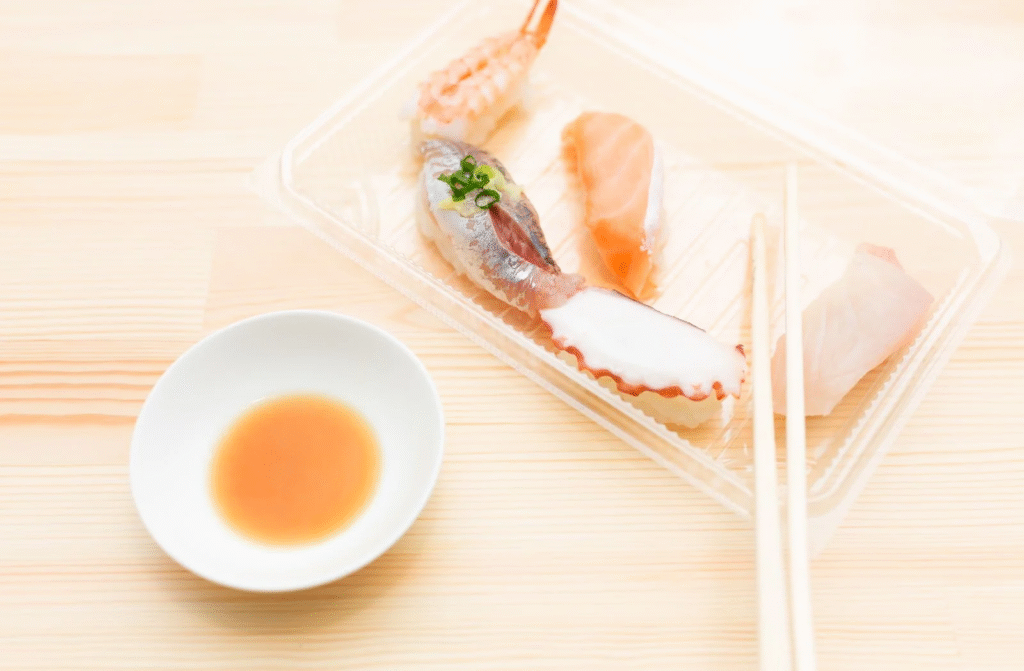
Chopstick rules (what not to do!)
Chopsticks (hashi) are used daily in Japan, but there are certain manners that go beyond just how to hold them.
Here are some common mistakes to avoid:
- 🚫 Don’t stick chopsticks upright into a bowl of rice → This resembles a funeral ritual.
- 🚫 Don’t pass food from one pair of chopsticks to another → Also connected to funeral customs.
- 🚫 Don’t point at people or objects with your chopsticks → Considered rude.
- 🚫 Don’t play with your chopsticks or wave them around.
When you’re not using your chopsticks, place them neatly on the chopstick rest (hashioki) or across your bowl or plate (if no rest is provided).
Saying “Itadakimasu” and “Gochisousama”
In Japan, it’s common to say:
- “Itadakimasu” before eating (literally means “I humbly receive”)
- “Gochisousama deshita” after finishing your meal (“Thank you for the delicious meal”)
This is a way of showing gratitude — not only to the chef, but also to the farmers, fishermen, and everyone involved in bringing the food to the table.
Even if you’re not fluent in Japanese, saying these words with a smile is always appreciated.
Paying the bill — splitting or treating?
In Japan, the bill is usually brought to your table on a small tray.
When you’re ready to pay, take the tray to the cashier (paying at the table is rare).
- In casual meals with friends, splitting the bill (warikan) is common.
- In formal situations, especially with elders or hosts, the person who invites may cover the bill.
💡 Pro tip: Never hand money directly to the cashier’s hand — place it on the tray.
This small action is considered polite and respectful in Japan.
What to Eat in Yamanashi famous food
Yamanashi is home to many traditional Japanese dishes and famous local ingredients.
This article introduces foods you should try at least once when visiting the area.
If you’re planning a trip to Kawaguchiko, Yamanakako, or the Fuji Five Lakes region, be sure to check it out!
👉 What to Eat in Yamanashi famous food: 6 Local Foods You Must Try When Visiting Japan
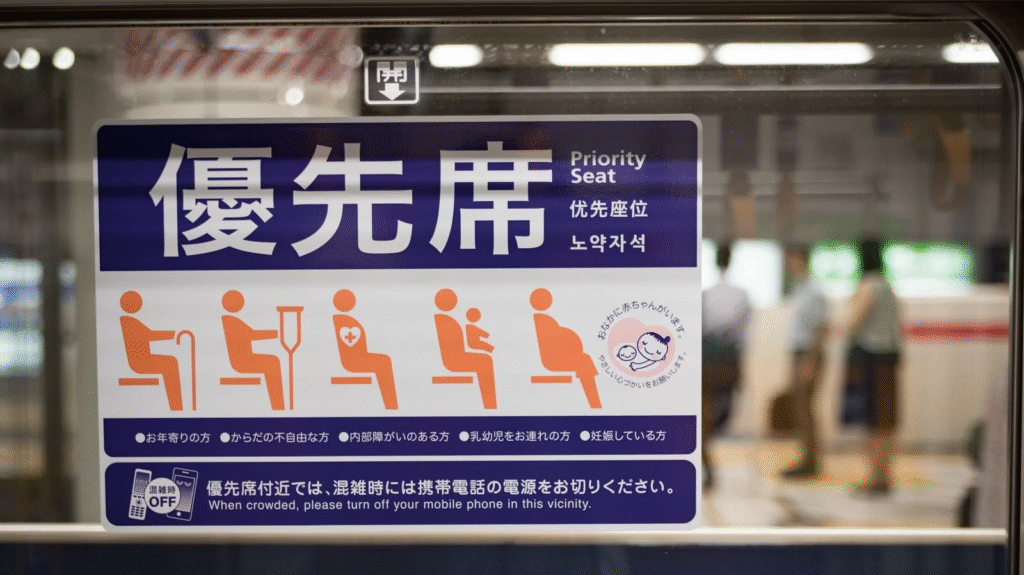
Quietness on public transportation
If you ride trains, buses, or subways in Japan, you might notice how quiet they are — even when crowded.
Talking loudly, making phone calls, or playing music without headphones is considered bad manners.
Key points to remember:
- 🔇 Keep conversations soft and brief.
- 📵 Don’t talk on the phone (most people put their phones on silent mode).
- 🎧 Use headphones and keep the volume low.
🚅 Special note: In the “priority seats” (yuusen seki), people may be asked to turn off phones completely, especially near passengers with pacemakers.
Queueing (lining up properly)
In Japan, people love a good line — and they respect it!
Whether at the train station platform, a bus stop, or even outside popular restaurants, it’s important to line up properly and wait your turn.
- ➡️ Look for marked lines on the ground (especially at train stations).
- ➡️ No cutting in line — this is a serious no-no in Japan.
Even during busy times, you’ll see people patiently waiting — it’s a sign of mutual respect.
Respecting personal space and cleanliness
Japan is often very crowded, but people still try to give each other personal space whenever possible.
- 🙏 Don’t touch strangers casually (hugging, back slapping, etc. are not common).
- 💧 Avoid eating or drinking while walking, especially in busy areas like train stations.
- 🚮 Take your trash with you — public garbage bins are rare, especially in cities like Tokyo.
Keeping spaces clean and respecting others’ comfort is part of the daily unspoken etiquette in Japan.
For more details on 【“How to Use Public Transportation in Japan: A Simple Guide for First-Time Visitors”】
Giving and Receiving Gifts

Wrapping and presenting gifts the Japanese way
In Japan, the way you present a gift is just as important as the gift itself.
Careful wrapping and presentation show thoughtfulness and respect.
- Use beautiful wrapping (furoshiki cloth or elegant paper is often used).
- Offer the gift with both hands as a sign of respect.
- Say “Tsumaranai mono desu ga…” (“This is just a small gift, but…”) — this is a humble phrase often used when giving presents.
Even a simple gift can feel special when presented politely!
When and how to offer small gifts (“Omiyage” culture)
Omiyage refers to small gifts or souvenirs, often local specialty foods, given after traveling or when visiting someone’s home.
Common situations for giving omiyage
- 🏠 When visiting someone’s house (especially for the first time).
- 🧳 After a trip — bringing local treats back for coworkers, friends, or family.
- 🙏 To express thanks or appreciation.
Even inexpensive snacks from the place you visited can show care and respect.
💡 Important: Don’t expect the person to open the gift right away — in Japan, it’s common to open gifts later in private.
Temple and Shrine Etiquette
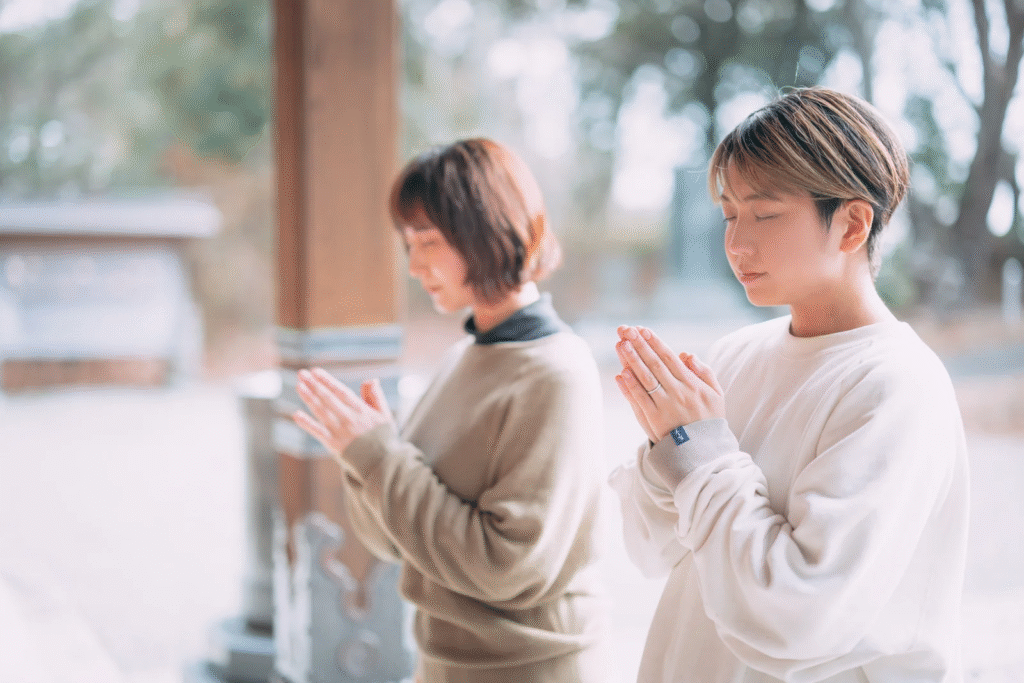
How to purify yourself at the water basin
At the entrance of many shrines and some temples, you’ll find a water basin called chozuya or temizuya.
Visitors use this to purify their hands and mouth before approaching the sacred area.
🎯 How to do it properly
- 🫙 Pick up the ladle with your right hand, scoop water, and pour it over your left hand.
- 🤲 Switch the ladle to your left hand and pour water over your right hand.
- 🫧 Pour some water into your left hand, rinse your mouth (don’t touch the ladle directly to your mouth), and quietly spit the water beside the basin (not into it).
- 🪣 Hold the ladle vertically to let the remaining water rinse the handle.
- 🫴 Return the ladle, facing it down.
It’s okay if you’re not perfect — just doing this with care shows respect.
Proper way to pray at shrines
At Shinto shrines (not Buddhist temples), the typical way to offer a prayer is:
- 🪙 Throw a coin into the offering box (5 yen coins are considered lucky).
- 🙇 Bow twice deeply.
- 👏 Clap your hands twice.
- 🧘♂️ Make your silent prayer or wish.
- 🙇 Bow once more deeply.
💡Some larger shrines may have specific instructions — always check for signs nearby!
Photography rules
While Japan is a very photo-friendly country, there are some important rules at temples and shrines:
- 🚫 No photos in sacred areas (check for signs that say “No photography”).
- 🙏 Don’t take photos of people praying up close — it’s a private moment.
- 🧘 Be quiet and respectful — these are places for reflection and worship.
If in doubt, always ask or look around at what others are doing.
Conclusion
Japanese etiquette is not just a list of rules — it’s a way of showing respect, kindness, and understanding toward others.
Whether it’s a small bow, taking off your shoes, or saying “Itadakimasu,” these actions reflect the spirit of harmony that is so important in Japanese culture.
As a traveler, you’re not expected to be perfect.
But being aware of these customs and making the effort to follow them will open doors (and hearts!) during your journey.
- A smile goes a long way.
- A simple bow shows you care.
- A little curiosity and respect will turn your trip into a meaningful experience.
I hope this guide helps you feel more confident and comfortable as you explore Japan — and that it leads to many warm and positive connections along the way.
Enjoy your Slow Journey through Japan!
For those planning a trip to Lake Kawaguchi or Lake Yamanaka
If you’re planning a trip to Kawaguchiko, Yamanakako, or the Fuji Five Lakes area, check out this article!
A local Japanese resident from Kawaguchiko shares not only the famous sightseeing spots but also hidden gems and local favorite shops that most tourists never discover.
👉 Lake Kawaguchiko: A Local’s Guide to Hidden Spots and the Best Mt. Fuji Views
👉 Best Time to Visit Mt. Fuji – Seasonal Tips from a Local in Yamanashi
👉 Exploring Iyashi no Sato Nenba: A Hidden Traditional Village Near Mt. Fuji


